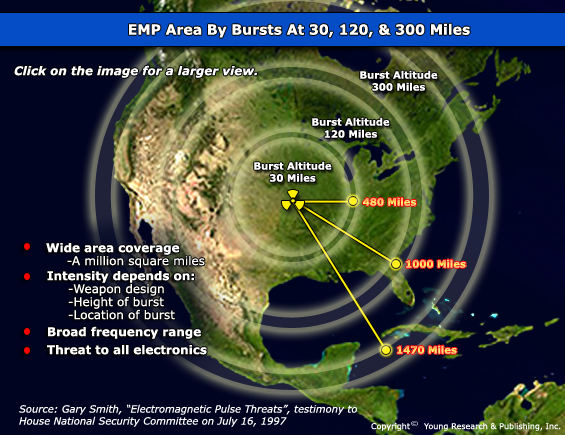
Client: Lockheed Martin Missiles and Fire Control
Team: Stephen Beckert, Brandon Joslin, Pierce, Meier
Faculty Advisor: Dr. Barr
Year: 2010
Documents: Final Report, Presentation
Lockheed Martin presented us with a project more exciting than we could ever imagine: aiding the research into ways to model the effects of an Electromagnetic Pulse (EMP). EMP is extremely devastating and can be caused by both natural and man-made events. EMP primarily affects electronic devices, rendering them useless or destroyed. Since the United States is heavily dependent on electronic interfaces, we are extremely vulnerable to this effect. In addition to this vulnerability to the EMP effect, the United States has a complex system of connected critical infrastructures that have not been studied as interrelated systems. This presents a major problem, how can one forecast the possible failures of such a massive complex system?
The first step was to learn all we could about the effects of Electromagnetic Pulse. Lockheed had provided us with hundreds of pages of literature to read about countless studies into the effect, and these proved very helpful. The Internet contained many videos and simulations regarding the effects of EMP, which helped us get a visual sense of its devastating capabilities. After looking at this data we were able to construct a map of the possible interdependencies of the US infrastructure. Linking nodes such as Electrical Power to Telecommunications or Transportation to Petroleum Production gave us an insight to the scale of the problem.
With just this data about the possible effects and a simple map of the interdependencies of the US infrastructure we were invited to present to the EMIS Distinguished Advisory Board. This presentation focused primarily on the issues to be tackled, as well as a few possible scenarios where EMP might be employed offensively. The presentation went very well, and the positive reception gave us a huge morale boost.
We sought to find the best method for analyzing a system as complex as the entire US infrastructure. We have looked at traditional Fault Tree Analysis and Failure Mode Effects Analysis, as well as a newly developed method called Bouncing Failure. We concluded that Target Systems Analysis, which can be adapted into a three-dimensional map, can ideally display interdependencies for an entire system if the algorithm is reoriented.